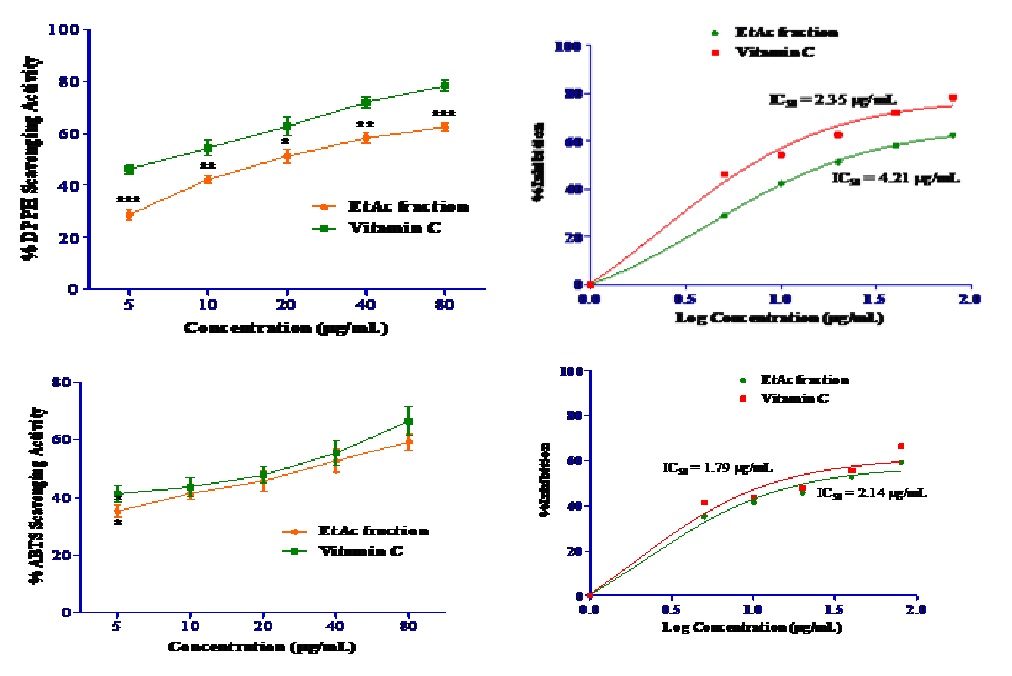Evaluation of In Vitro and In Vivo Antioxidant Potential of the Ethyl Acetate Fraction of Cyperus Pangorei Rhizome
Abstract
Background and Aim: Antioxidants derived from natural sources, particularly those rich in flavonoids and phenolic compounds, have attracted considerable interest for their potential health benefits in combating oxidative stress-related diseases. This study aimed to evaluate the antioxidant potential of the ethyl acetate (EtAc) fraction obtained from Cyperus pangorei rhizome, focusing on both in vitro and in vivo assessments. Methods: The EtAc fraction was subjected to RP-HPLC analysis to identify and quantify phenolic compounds and flavonoids. Acute toxicity testing was performed to assess the safety profile of the EtAc fraction. In vitro antioxidant activity was determined using DPPH and ABTS+ radical scavenging assays. In vivo evaluation of antioxidant activity was conducted in Triton X-100-induced oxidative stress model in mice, measuring malondialdehyde (MDA) content, glutathione (GSH) levels, and superoxide dismutase (SOD) activity in liver tissues. Results: RP-HPLC analysis confirmed the presence of quercetin, luteolin, and apigenin in the EtAc fraction. The fraction exhibited significant dose-dependent antioxidant activity in both DPPH and ABTS+ assays, with IC50 values indicating potent scavenging effects. In the Triton X-100-induced stress model, administration of the EtAc fraction led to a reduction in MDA levels, restoration of GSH levels, and enhancement of SOD activity in mouse liver tissues. Conclusion: The findings suggest that the EtAc fraction from C. pangorei possesses promising antioxidant properties, as evidenced by its ability to mitigate oxidative stress-related damage both in vitro and in vivo.
Downloads

Copyright (c) 2024 International Journal of Ayurveda and Pharma Research

This work is licensed under a Creative Commons Attribution-NonCommercial-ShareAlike 4.0 International License.






